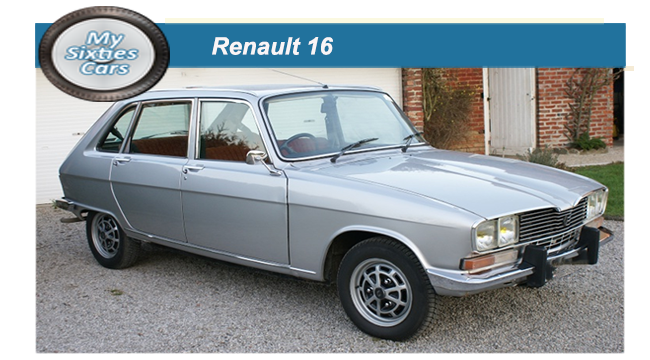
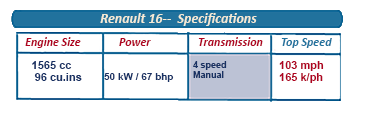 The Renault 16 was formally presented to the public in the spring of 1965 at the Geneva Motor Show, although details of this exciting and innovative new design had been floating around the motoring media for several months previously.
The Renault 16 was formally presented to the public in the spring of 1965 at the Geneva Motor Show, although details of this exciting and innovative new design had been floating around the motoring media for several months previously.
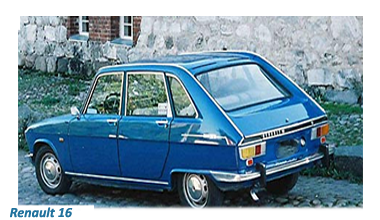 Styling of the Renault 16 varied considerably from any existing models, dominated by the large rear hatchback while at the front, the quad headlamps were a real design feature offset nicely by a three segment "bird-beak” grille.
Styling of the Renault 16 varied considerably from any existing models, dominated by the large rear hatchback while at the front, the quad headlamps were a real design feature offset nicely by a three segment "bird-beak” grille.
The Renault 16 could be powered by choice of four engines ranging upwards from 1400 cc to 1600cc, with the most popular a four-cylinder, overhead valve 1565cc engine.
![]()
Irrespective of engine size, the transmission was always four-speed manual gearbox, with a column mounted gear lever which meant even more floor space in the front cabin.
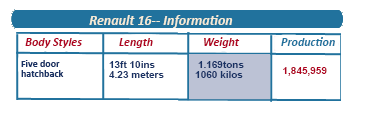 Most West European drivers who might have initially seen the column change as an inconvenience and challenging to get used to, as it was indeed uncommon in West European produced vehicles, soon realised that it advantages far outweighed its disadvantages.
Most West European drivers who might have initially seen the column change as an inconvenience and challenging to get used to, as it was indeed uncommon in West European produced vehicles, soon realised that it advantages far outweighed its disadvantages.
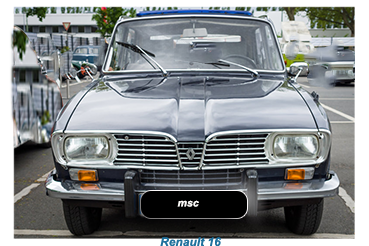 What made the 16 stand out from the crowd in the Renault family, was the generous level of space available, either as a people carrier or a dual-purpose vehicle with tremendous levels of cargo space (14.5 cubic feet or 411 Liter) when the rear seats were folded.
What made the 16 stand out from the crowd in the Renault family, was the generous level of space available, either as a people carrier or a dual-purpose vehicle with tremendous levels of cargo space (14.5 cubic feet or 411 Liter) when the rear seats were folded.
Access to the rear of the vehicle through the hatchback opening was a driver’s dream, with the “cargo” area being almost entirely level, thanks to Renault’s painstaking efforts to ensure that this would happen.
An additional factor that played a large part in freeing as much cabin space as possible was that the 16’s engine was front mounted as well as playing a significant role in the excellent handling and balance of this car through dispersing the weight towards the car’s centre.
![]()
A year after launch, the Renault 16 won the European Car of the Year for 1966; the first French-produced car do so.
Demand for the 16 continued steadily during its fifteen-year production run, during which time close to two million versions of the first real “dual purpose” hatchback rolled out the Renault showrooms of the World.
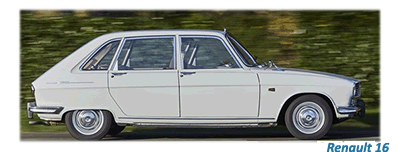 As much as it was a best seller, the Renault 16 was also a major trendsetter in the European car industry of its time.
As much as it was a best seller, the Renault 16 was also a major trendsetter in the European car industry of its time.






